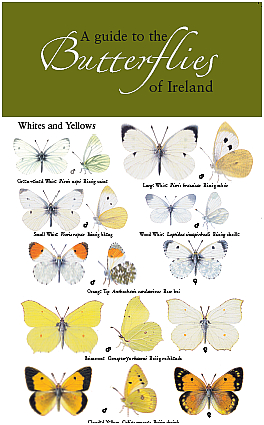Hon. Secretary Report 2023-2024
Hon.-Secretarys-Report-2023_2024A Guide to the Butterflies of Ireland
You may now purchase the Guide from the Publications page.

Protecting the Threatened Flora of Old Walls 2024
Newsletter Autumn 2023
Newsletter Summer 2023
Newsletter Spring 2023
Moths Pollinating Rubus fruticosus agg. Bramble?
Publication on the Pollen Deposition on Rubus fruticosus agg. Bramble (Briar) by Moths and other Insects
Recent research carried out by the University of Sussex has shown that (macro-) moths are very important nocturnal visitors to Bramble (Rubus fruticosus agg.) flowers and that the deposition rate of pollen is much higher at night than during the day i.e. moths appear to be much more important in transfer of pollen than daytime visitors which are hoverflies and to a lesser extent bees.
This research shows the importance of the ‘despised’ Bramble (Briar) as a source of nectar for moths and is a further reason why this plant should be allowed to flourish in the agricultural, urban and other landscapes.It should be noted however that Brambles are apomictic i.e.they do not need pollination to set fruit!
Below is the abstract of publication and the complete article may be sourced at https://journals.plos.org/plosone/article?id=10.1371/journal.pone.0281810
ABSTRACT
Widespread concerns about declines of wild pollinating insects has attracted considerable research interest, largely directed towards identifying key nectar sources and assessing the contribution of pollinators towards ecosystem services. However, previous work has almost exclusively focussed on bees and other diurnal invertebrate taxa. This study aimed to assess the relative contribution of diurnal and nocturnal insects to the pollination of bramble (Rubus fruticosus agg.), a common and widespread species aggregate across Europe, which has been identified as a key source of pollen and nectar for diurnal pollinators. Bramble flower visitation rates by diurnal and nocturnal insects were quantified by analysing over 380,000 interval photographs taken over a 3-day period across 10 sites. A pollinator exclusion experiment was also undertaken to assess the importance of diurnal and nocturnal insects for pollination by analysing pollen deposition on 480 bramble stigmas of nocturnally exposed, diurnally exposed and unvisited control flowers across all sites. Flower visitation was significantly higher during the day, comprising 83% of all visits made by a range of taxa. Nocturnal visitation was almost exclusively by moths. Crucially, pollen deposition rates of bramble were significantly higher during the night compared with the day. No relationship was detected between pollen counts and flower visitation rates, suggesting that moths are more efficient pollinators of bramble compared with diurnal insects. Overall, this work provides further evidence of the value of bramble as a resource for pollinators and demonstrates that moths likely play an important role in bramble pollination.
Biodiversity Action Plan
You will find below the DNFC response to
Ireland’s 4th National Biodiversity Action Plan (Draft)
The text may also be downloaded from the link above
DNFC_NBAP_Submission_November22Biodiversity Loss
You may download a copy of the DNFC submission to the Citizens’ Assembly on Biodiversity Loss from the link below as a pdf document or alternatively you may read read it online.
THE DNFC SUBMISSION TO THE ASSEMBLY
DNFC_AssemblyWildflower Seed Mixtures?
You may download the post from this link as a pdf file.
Wildflower-Mixtures-LR